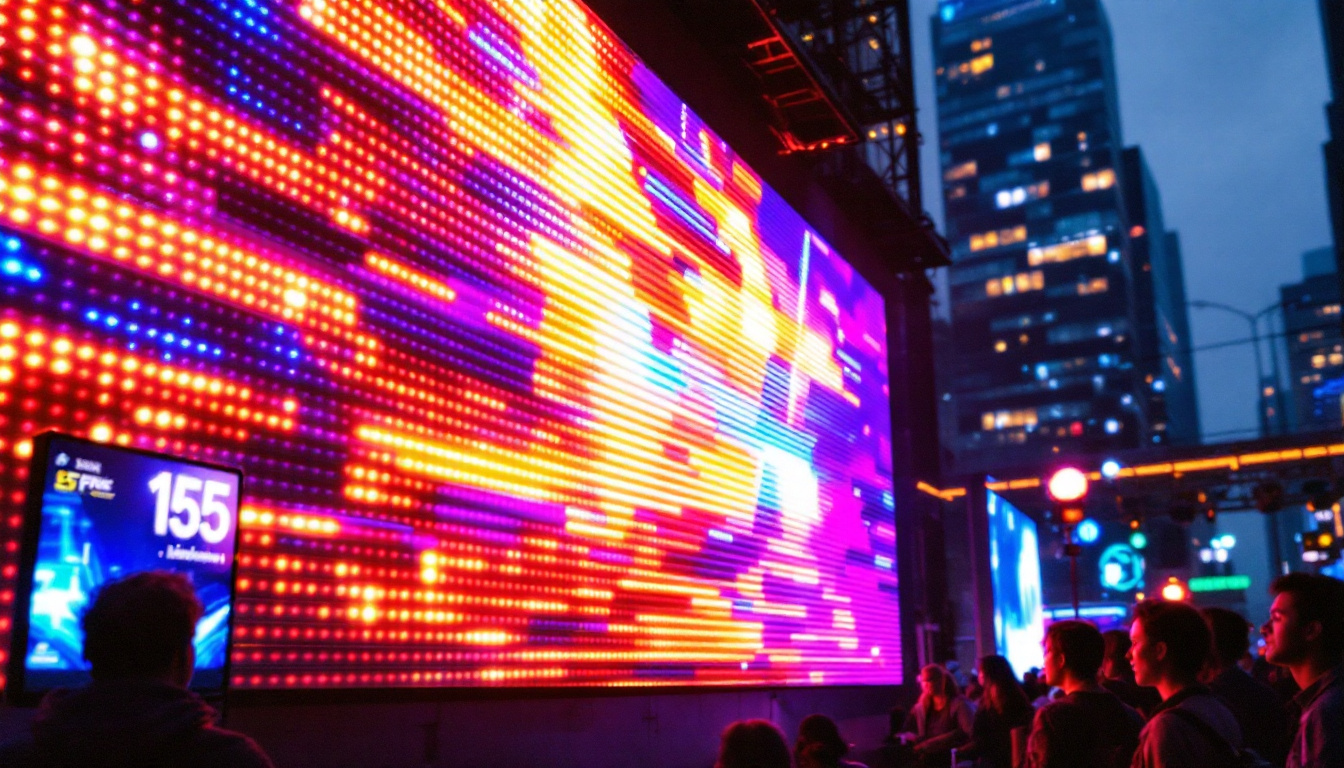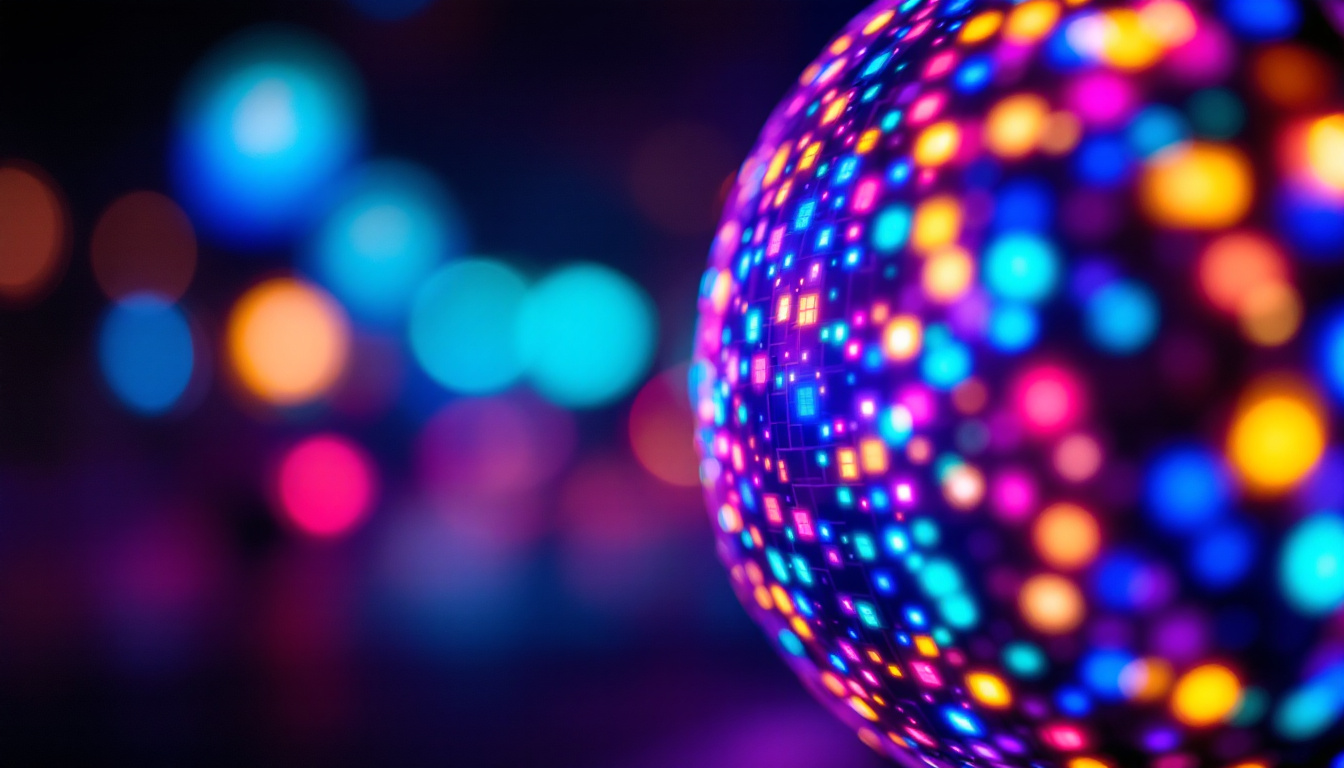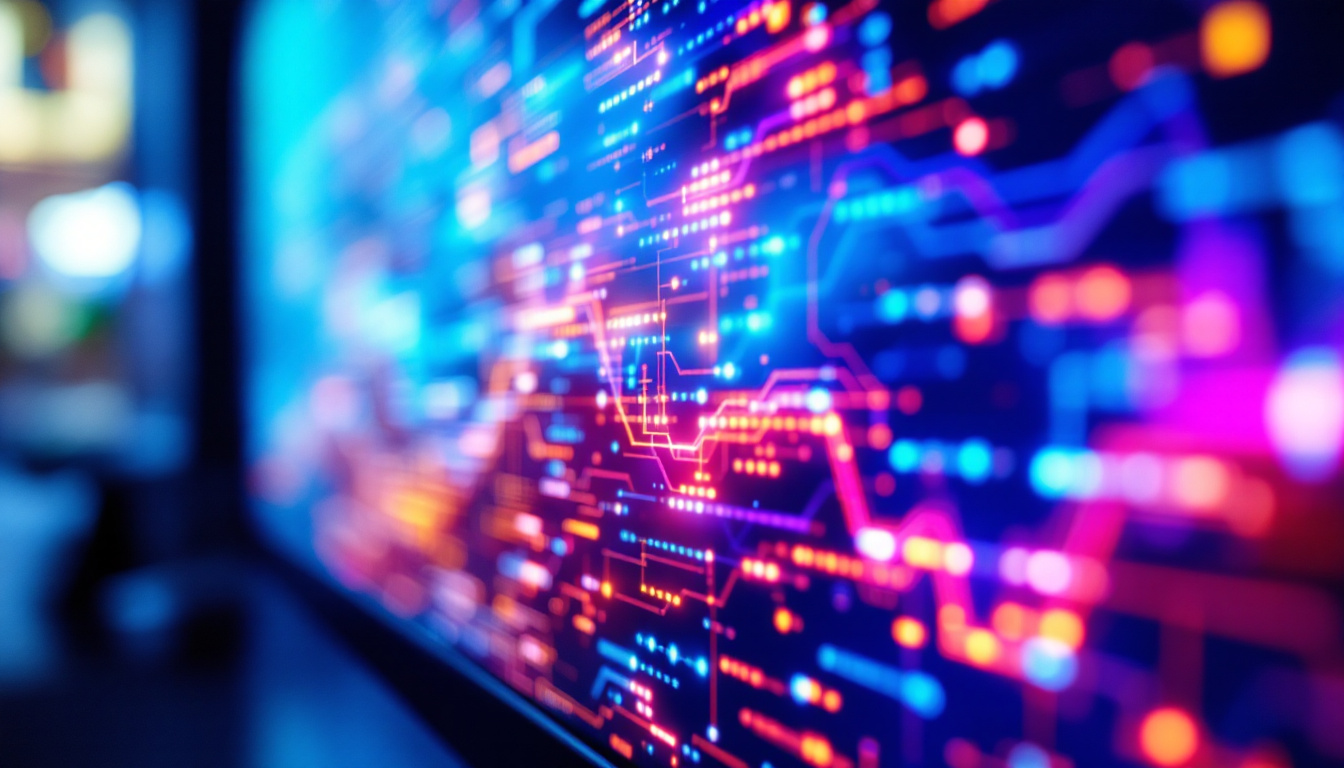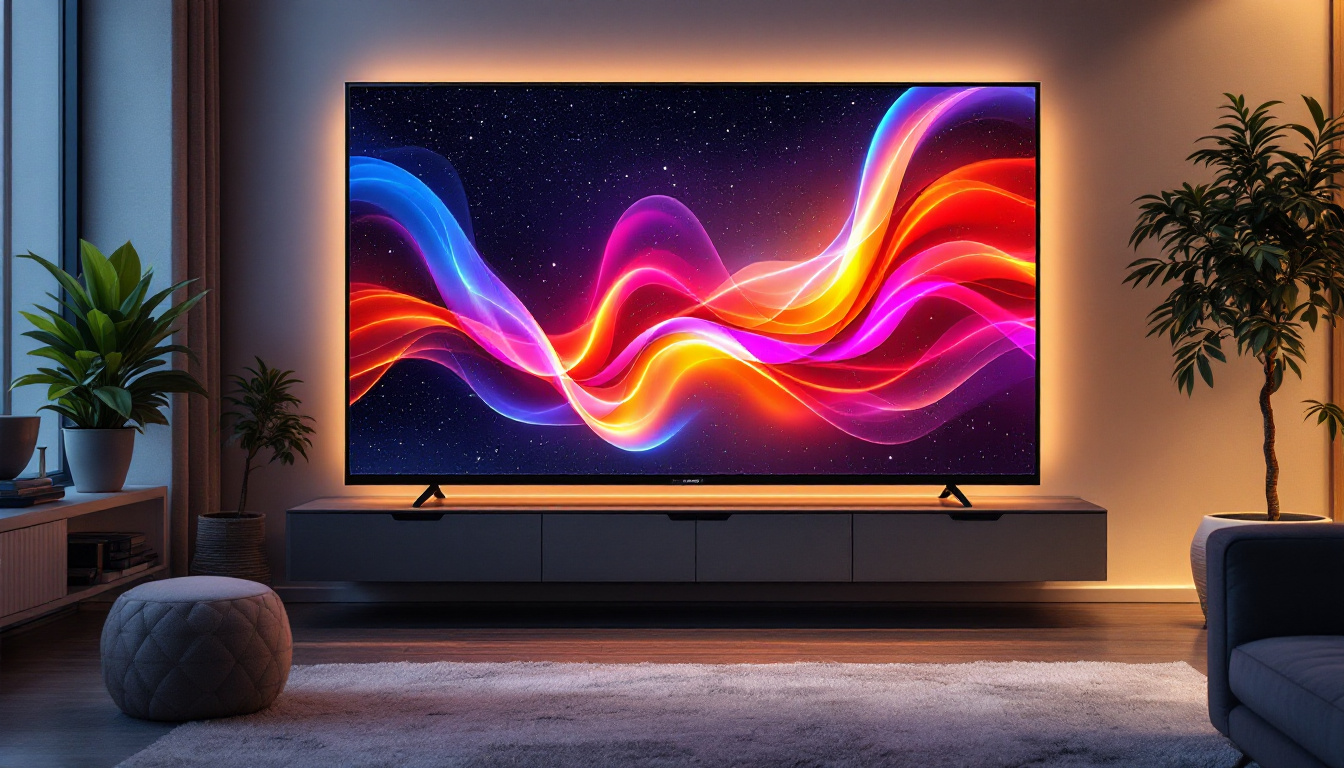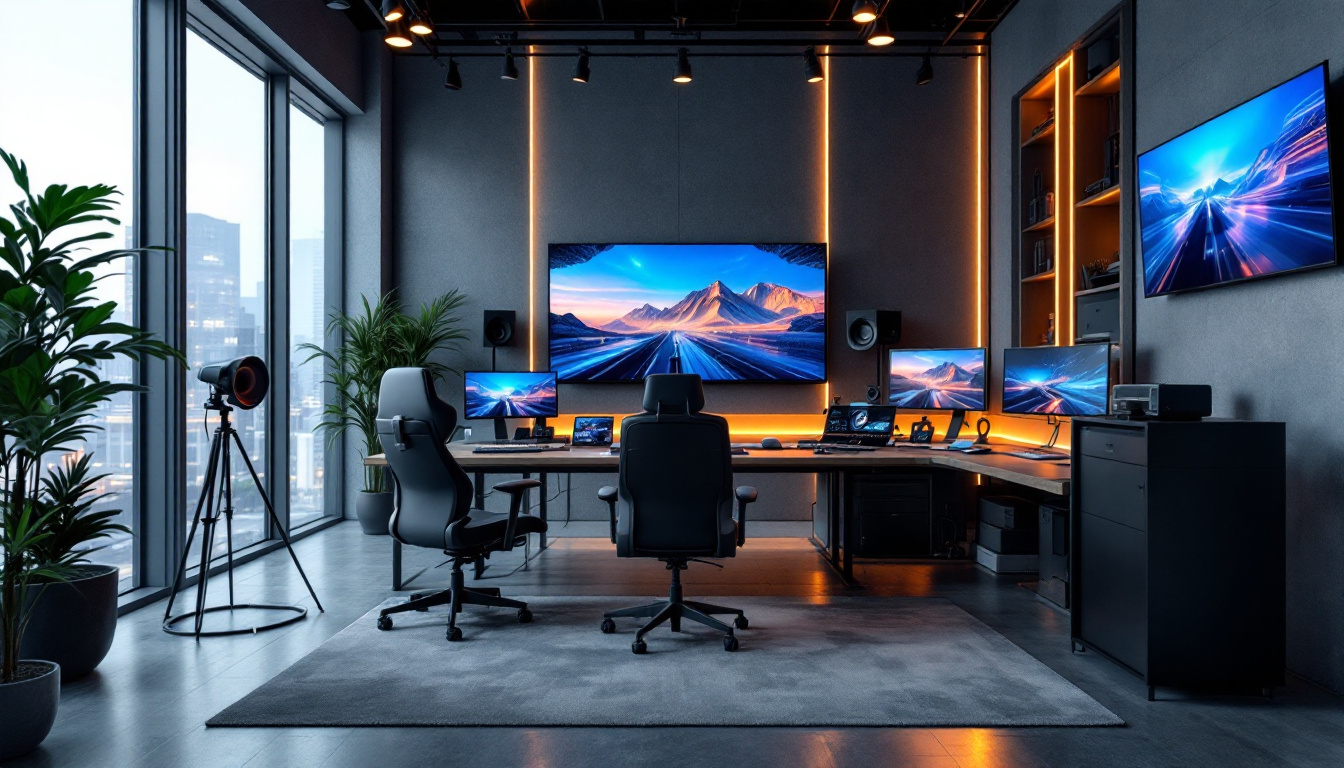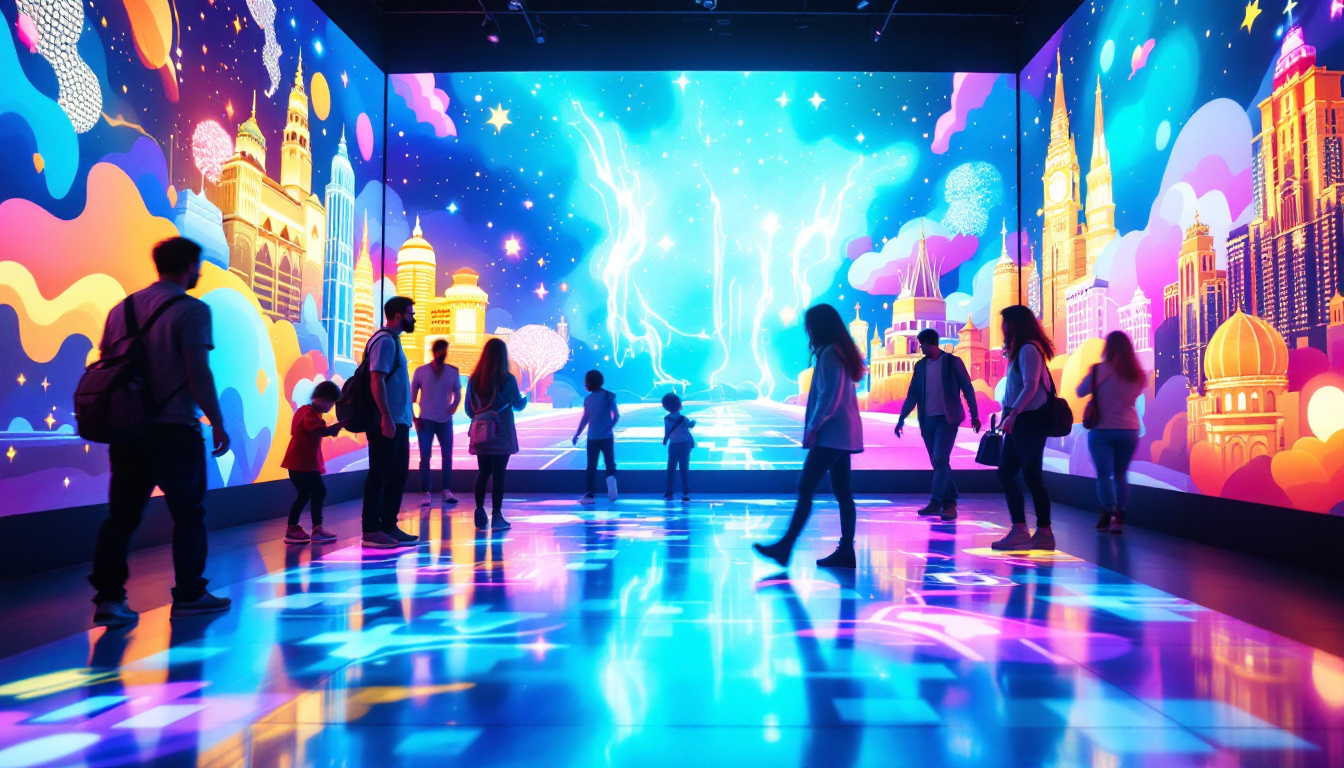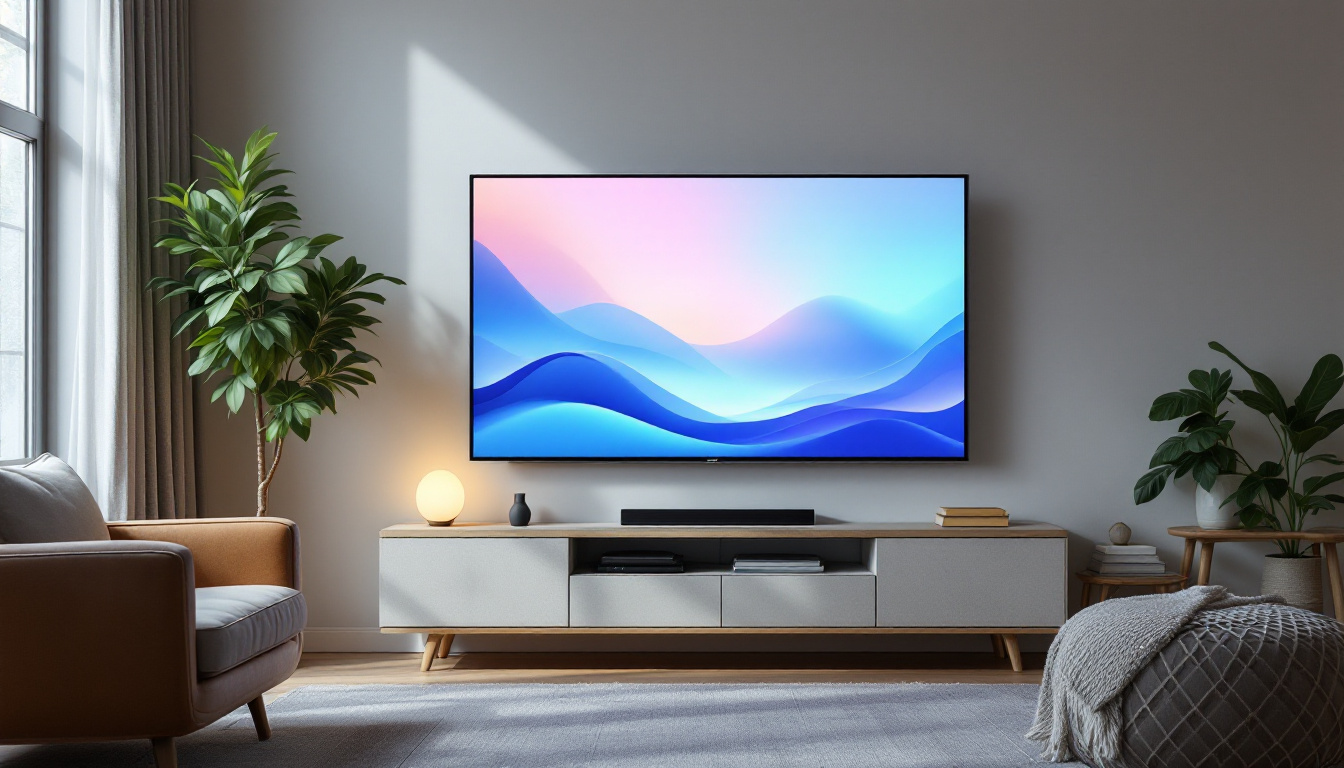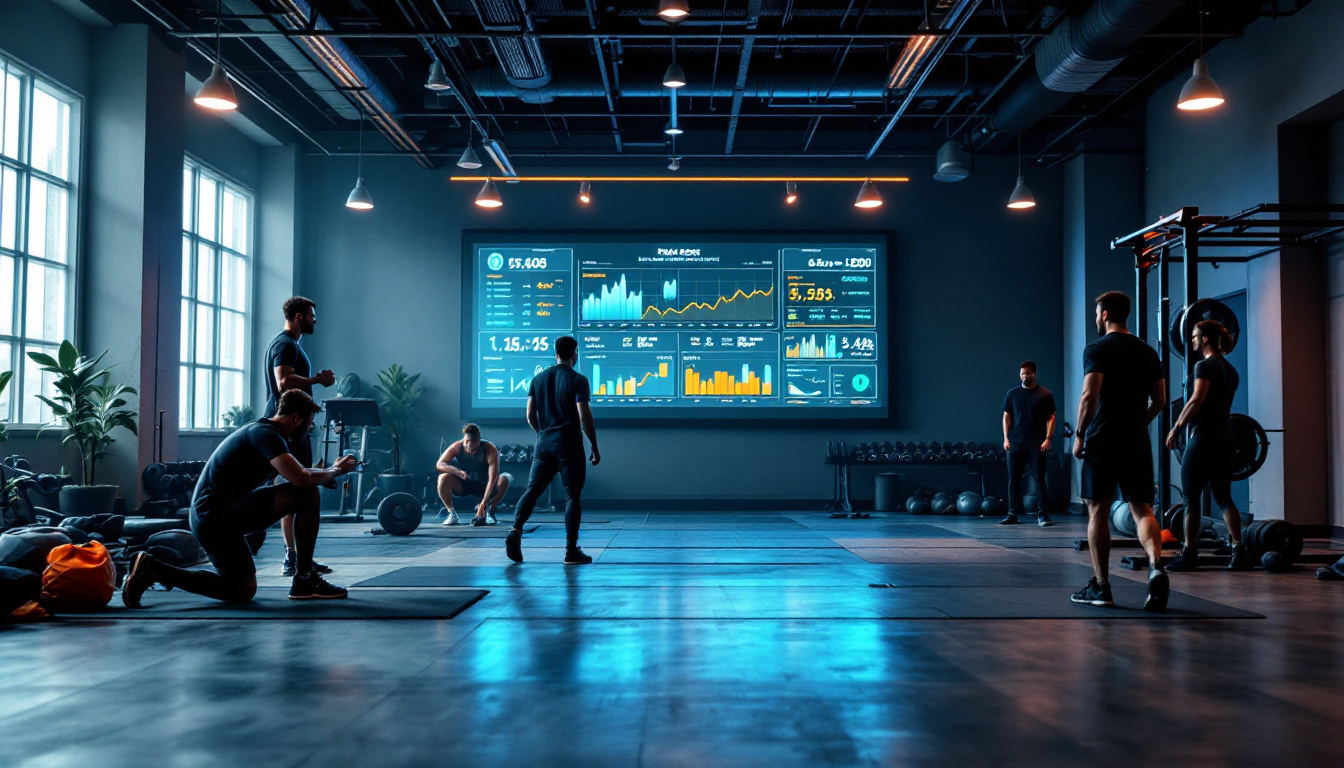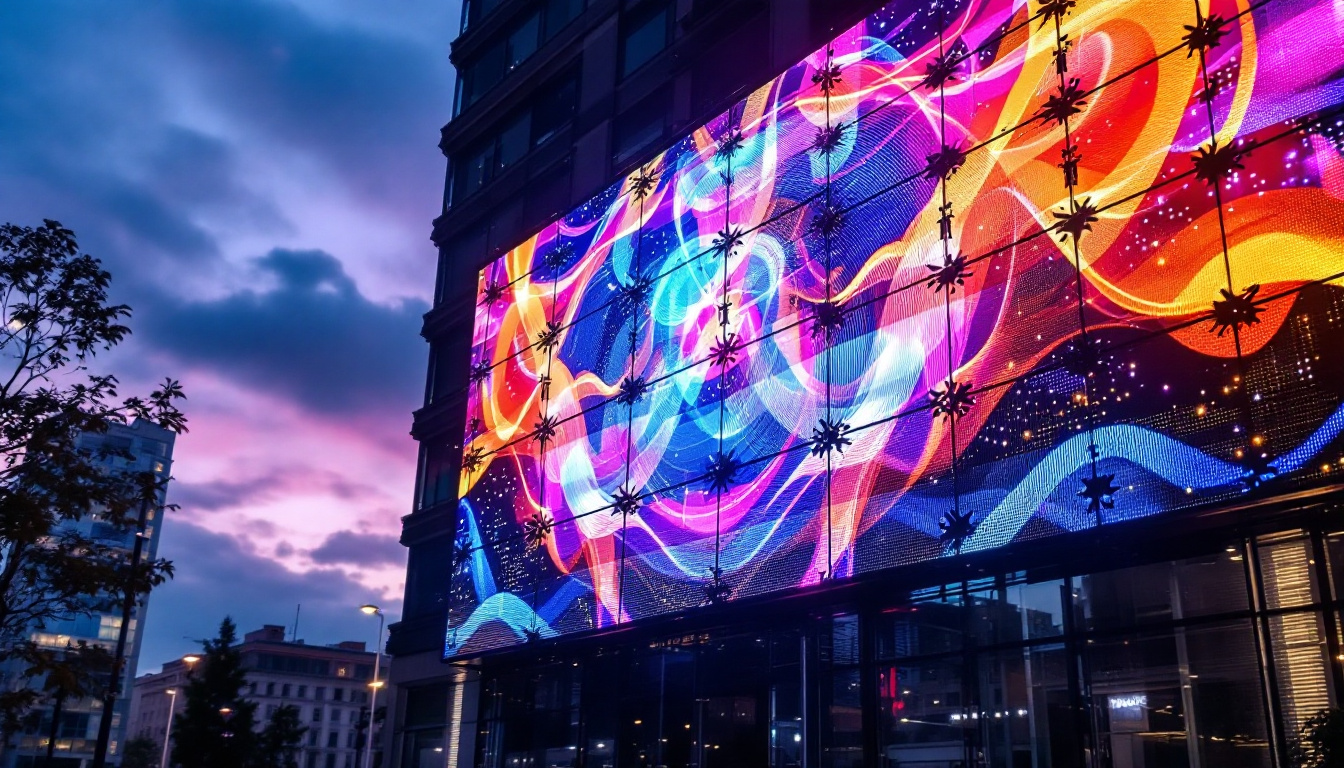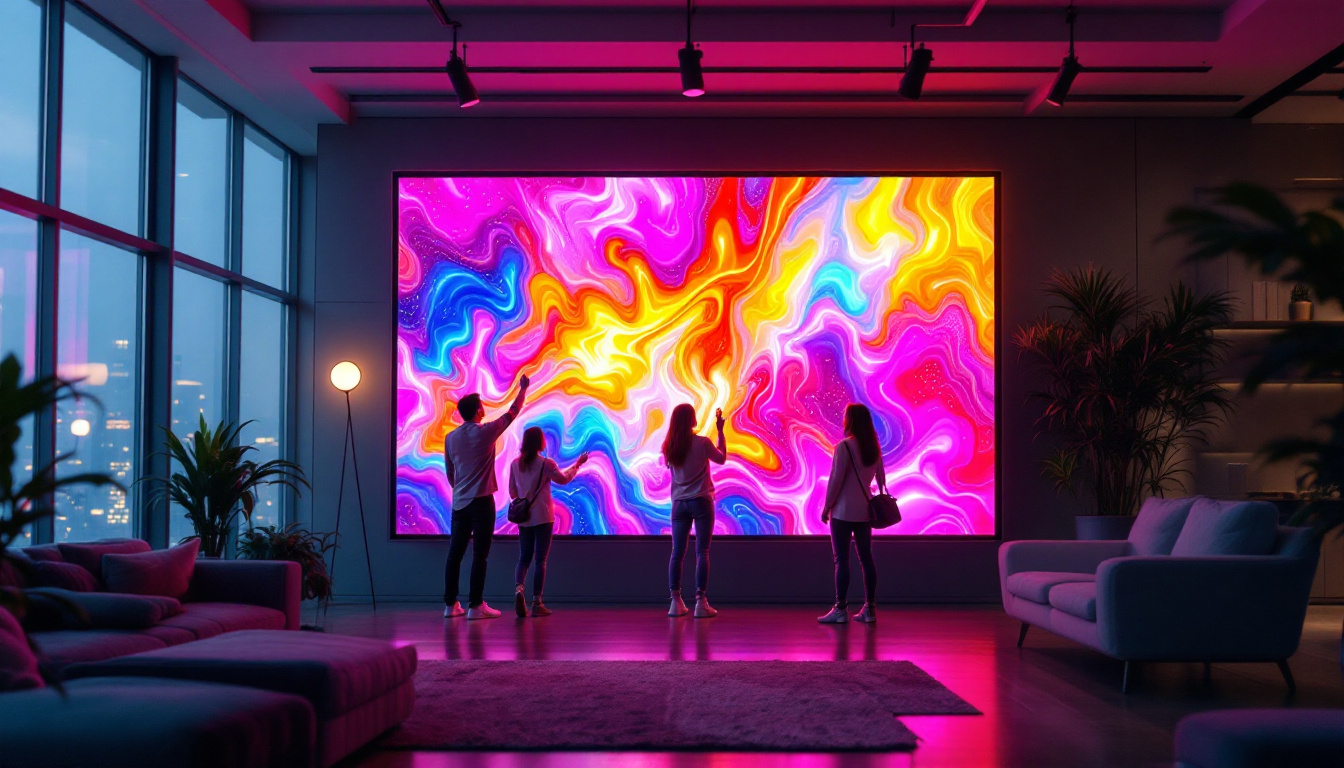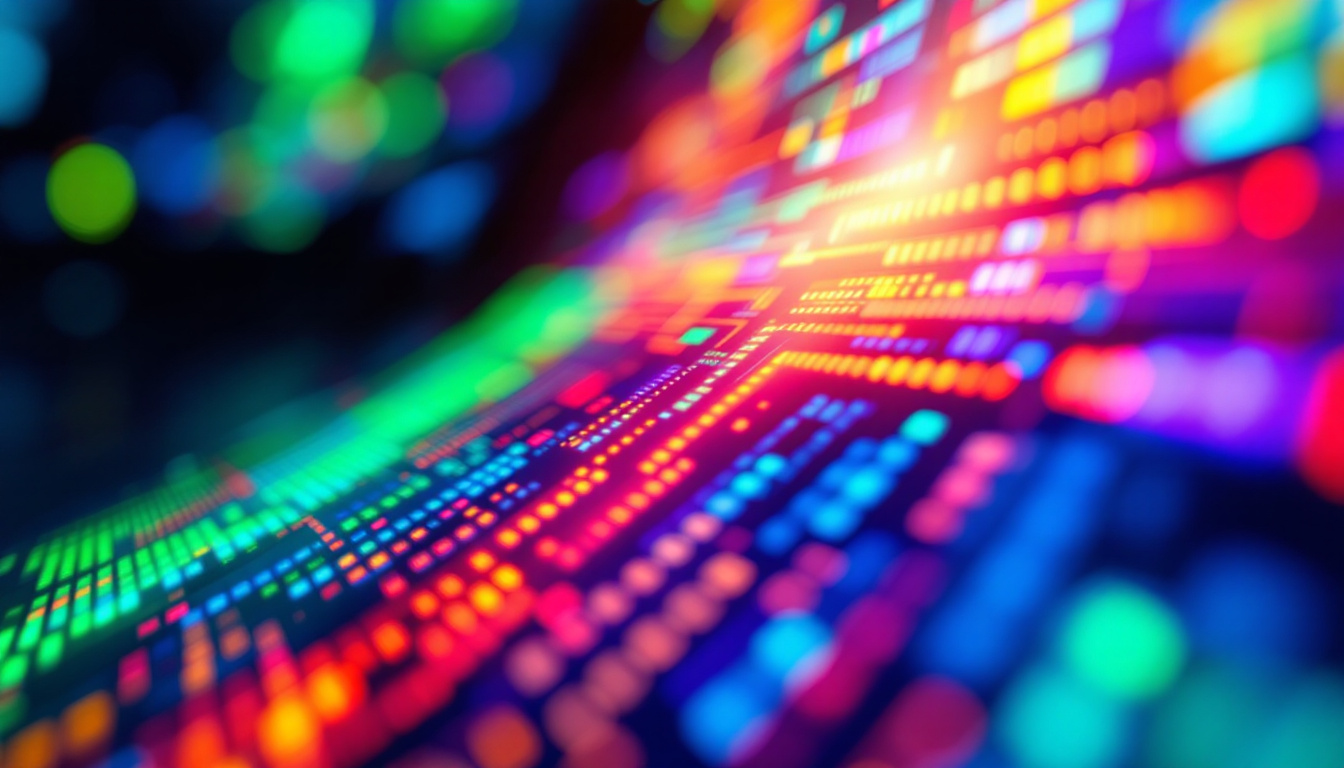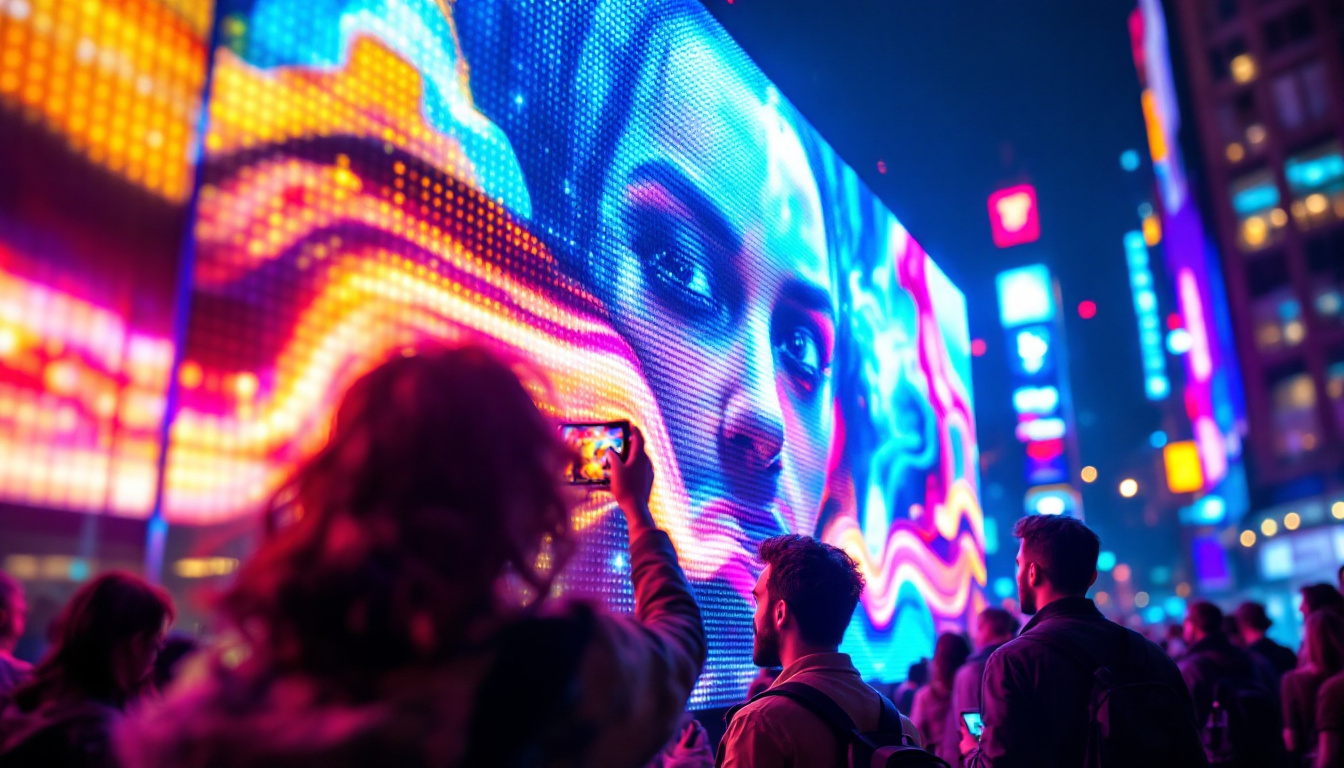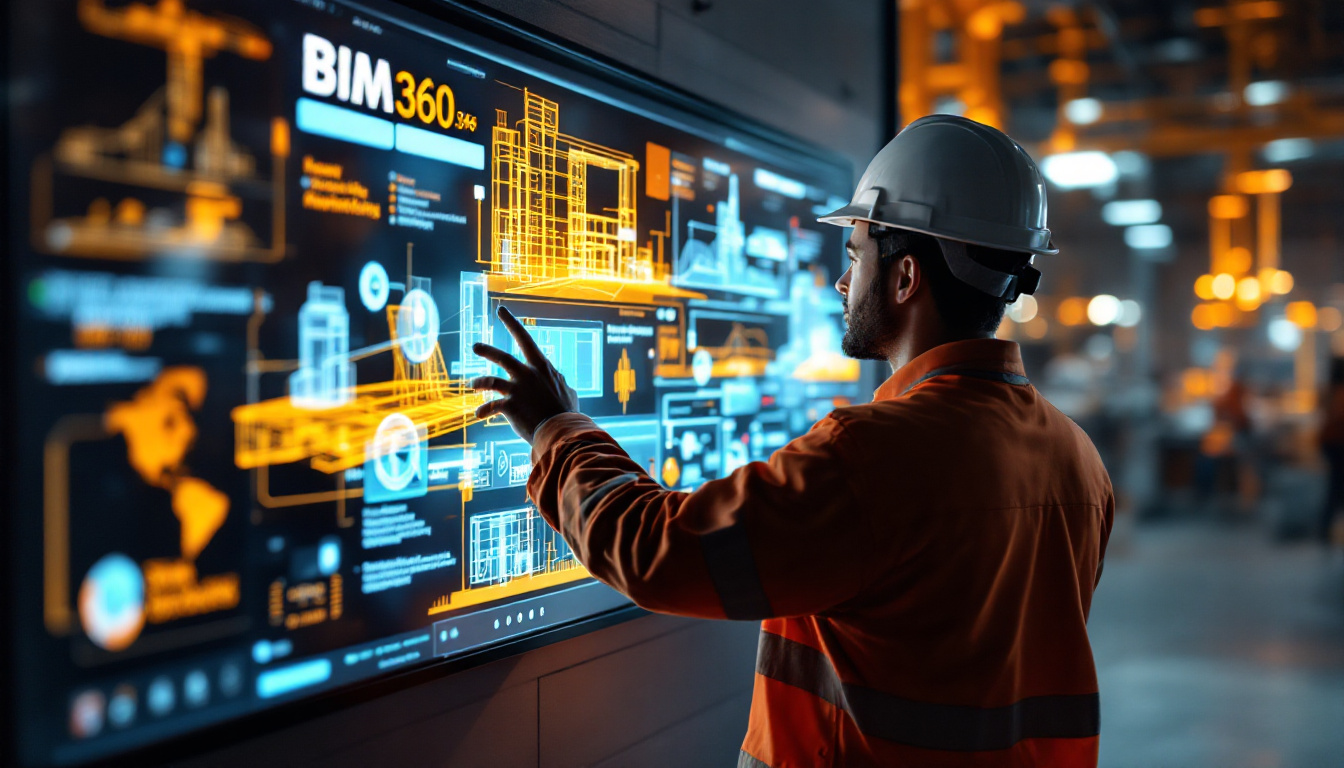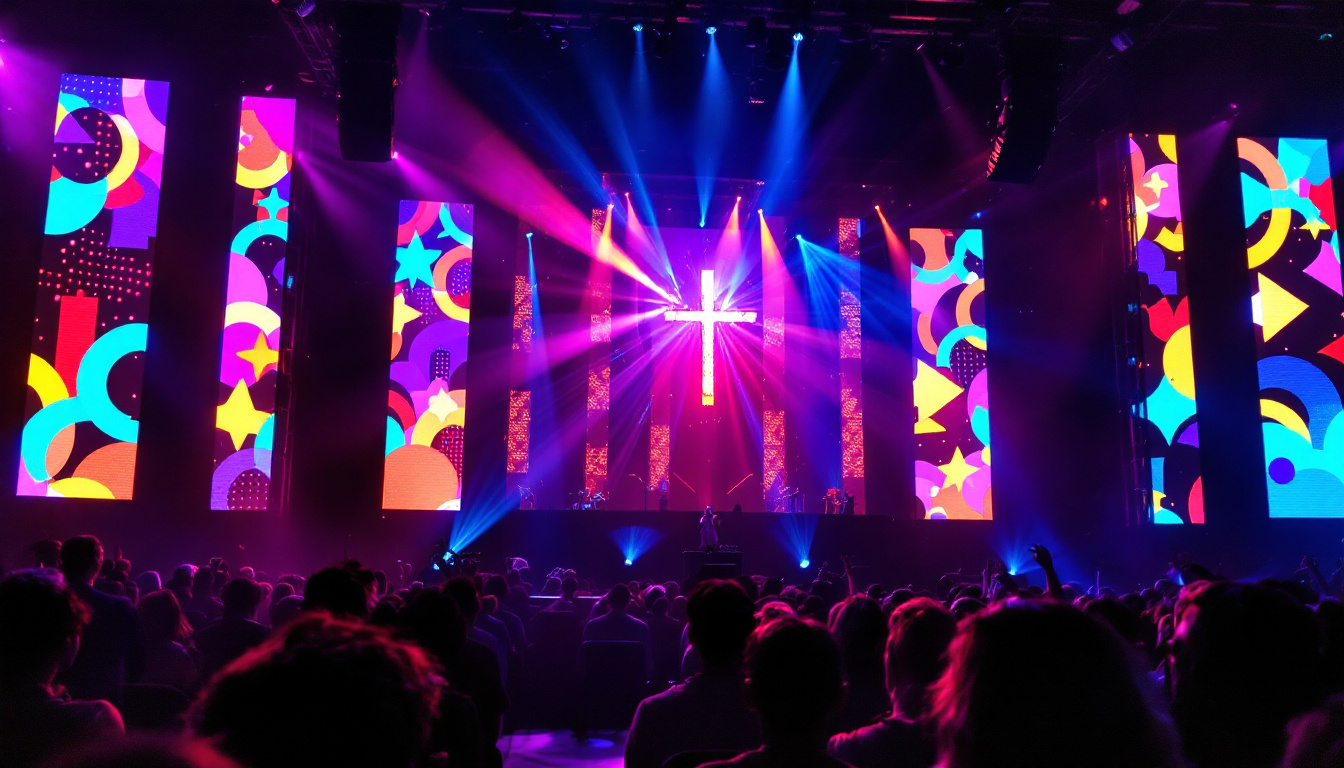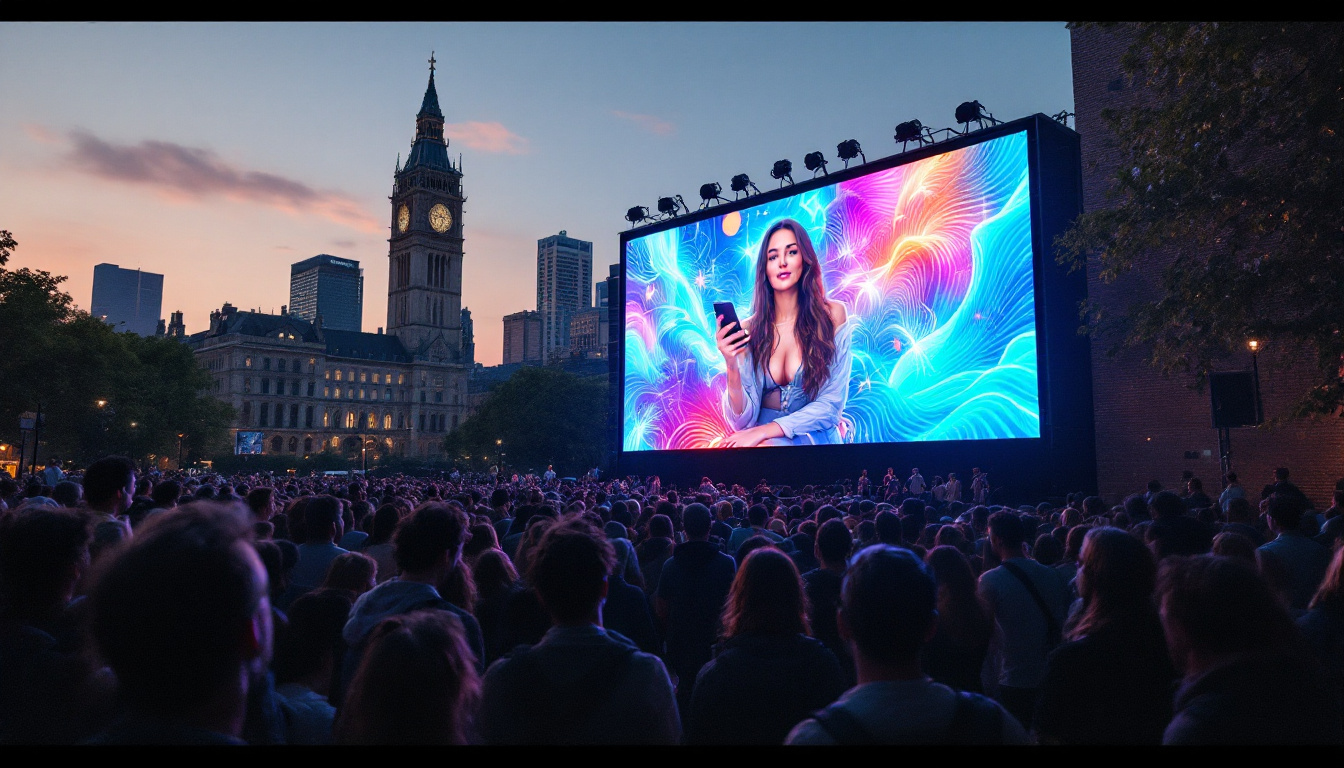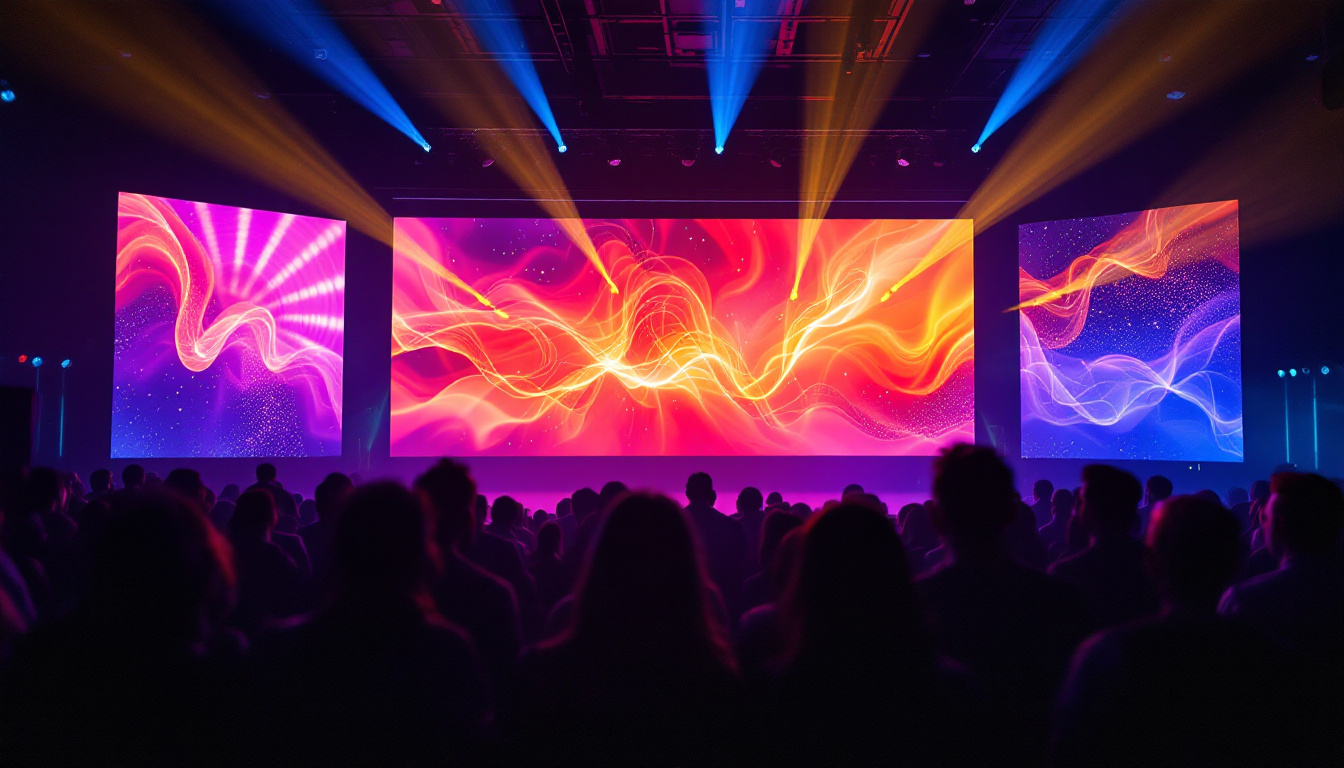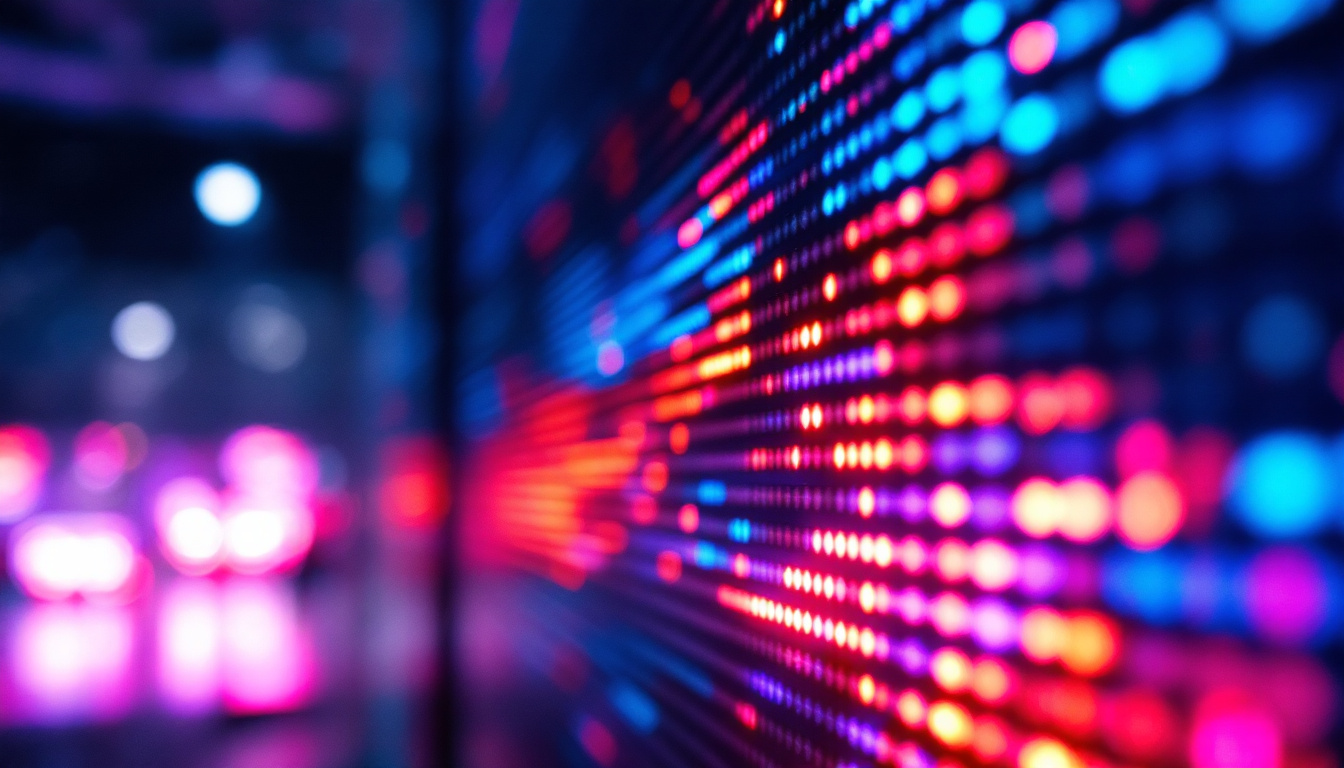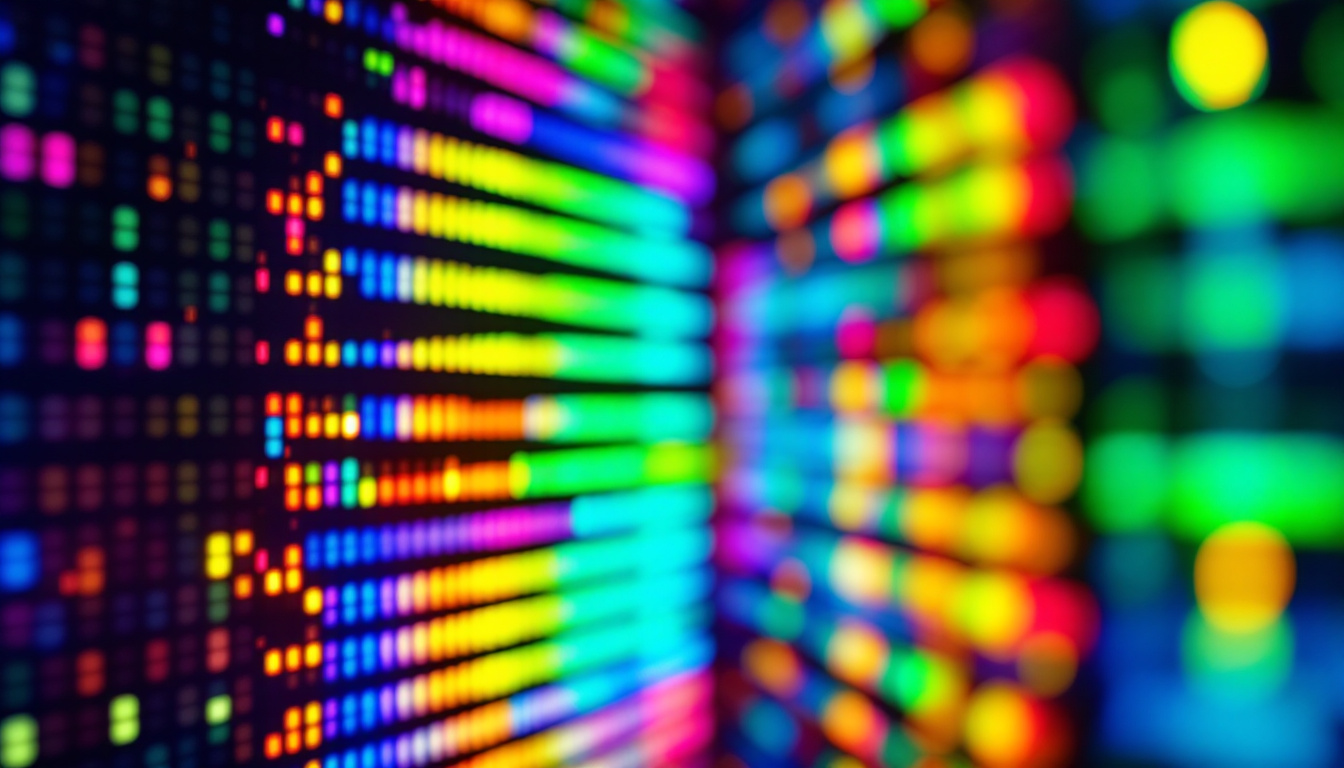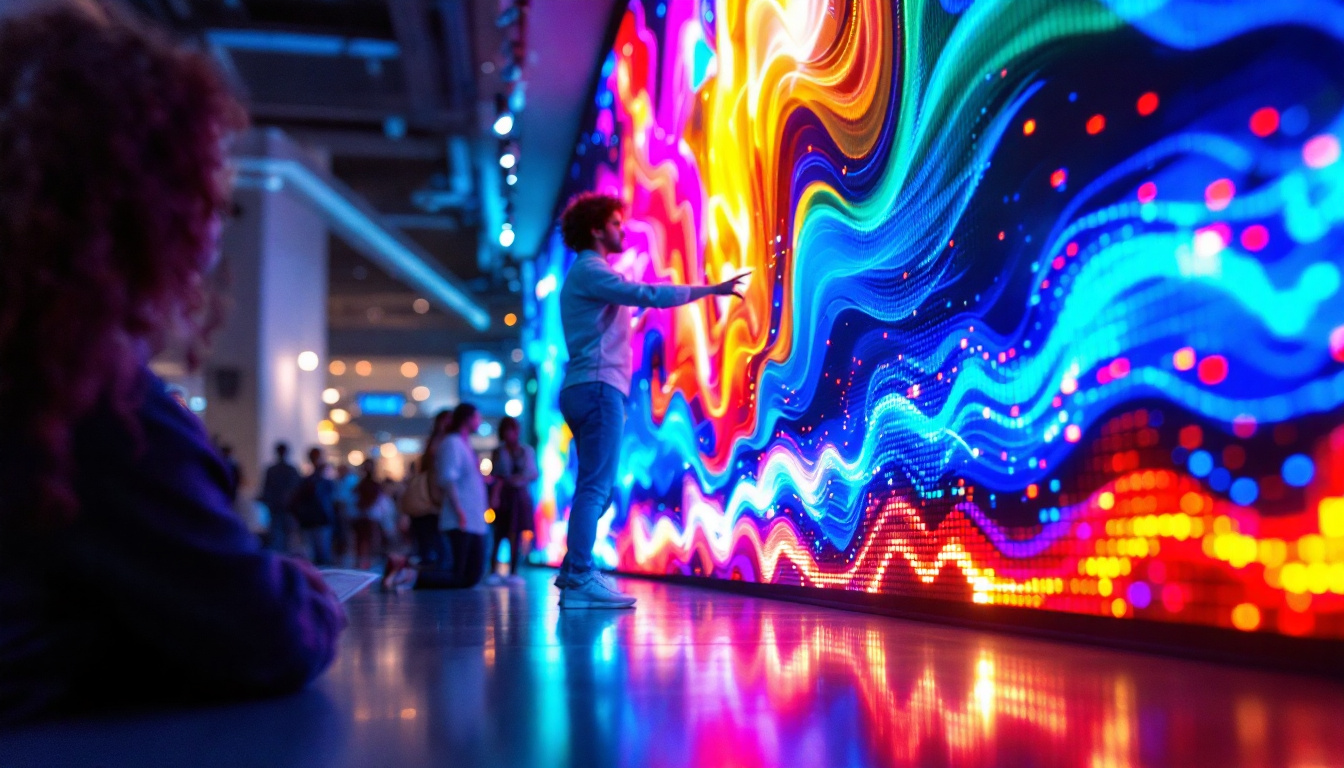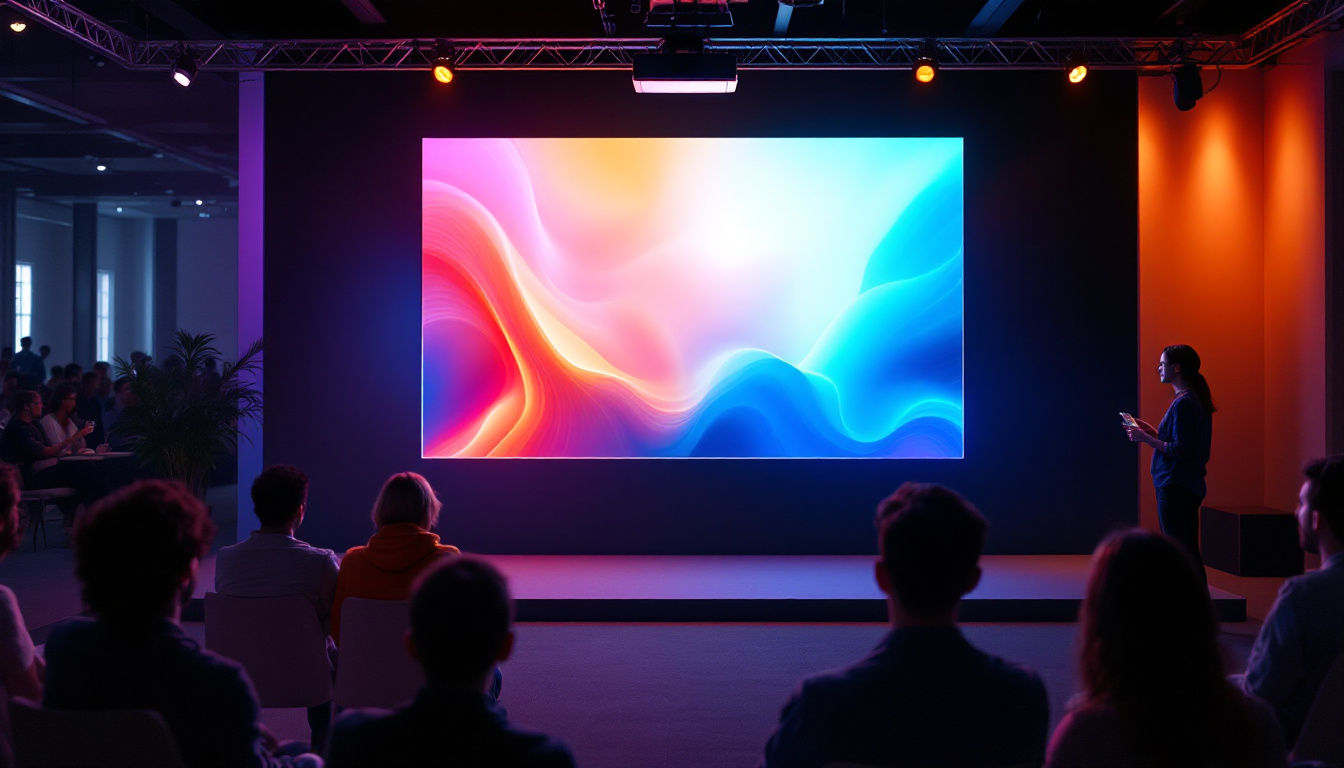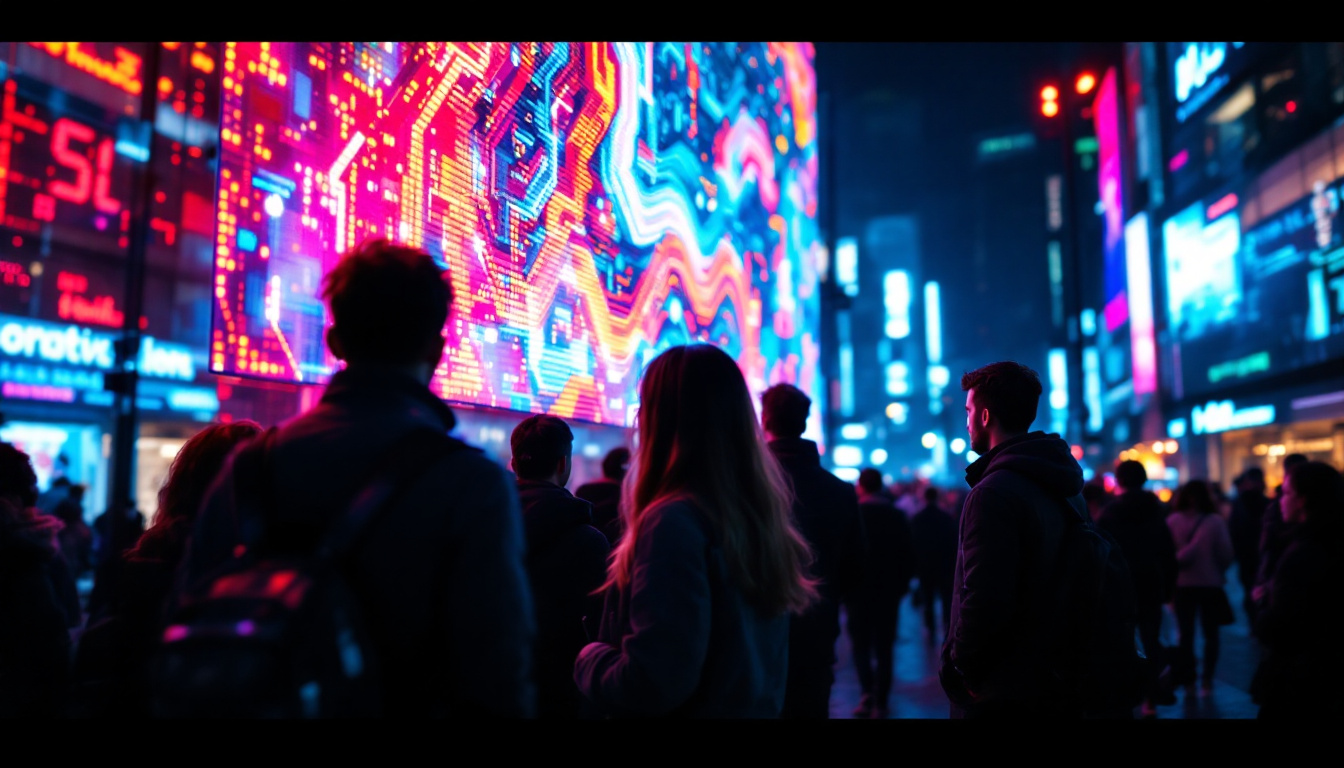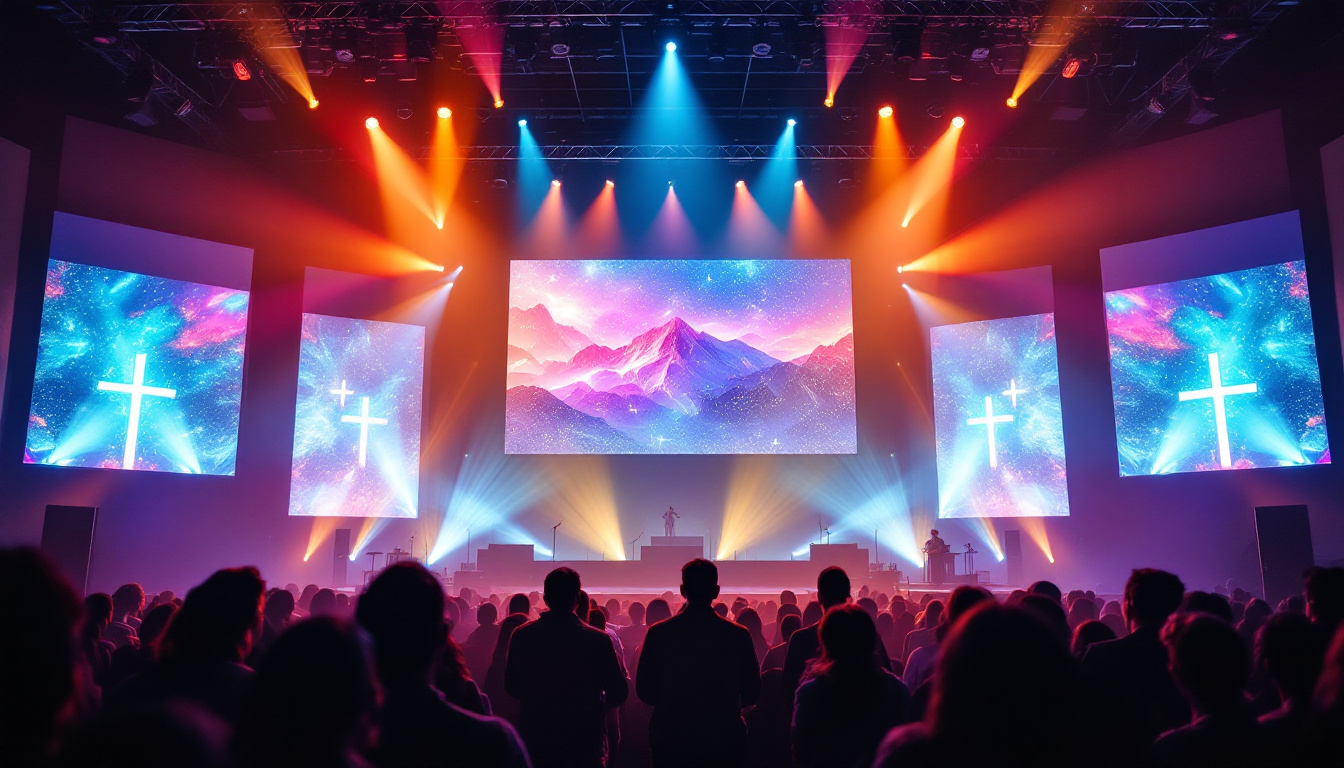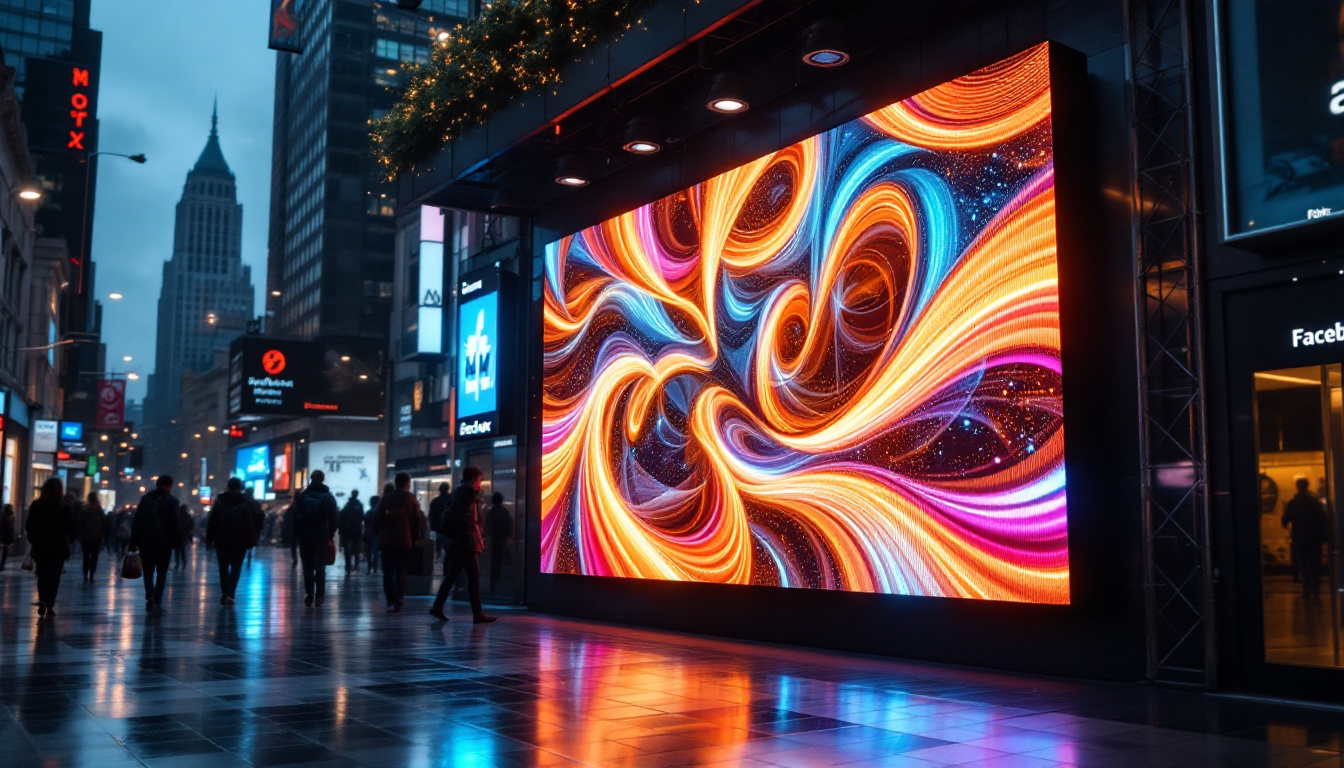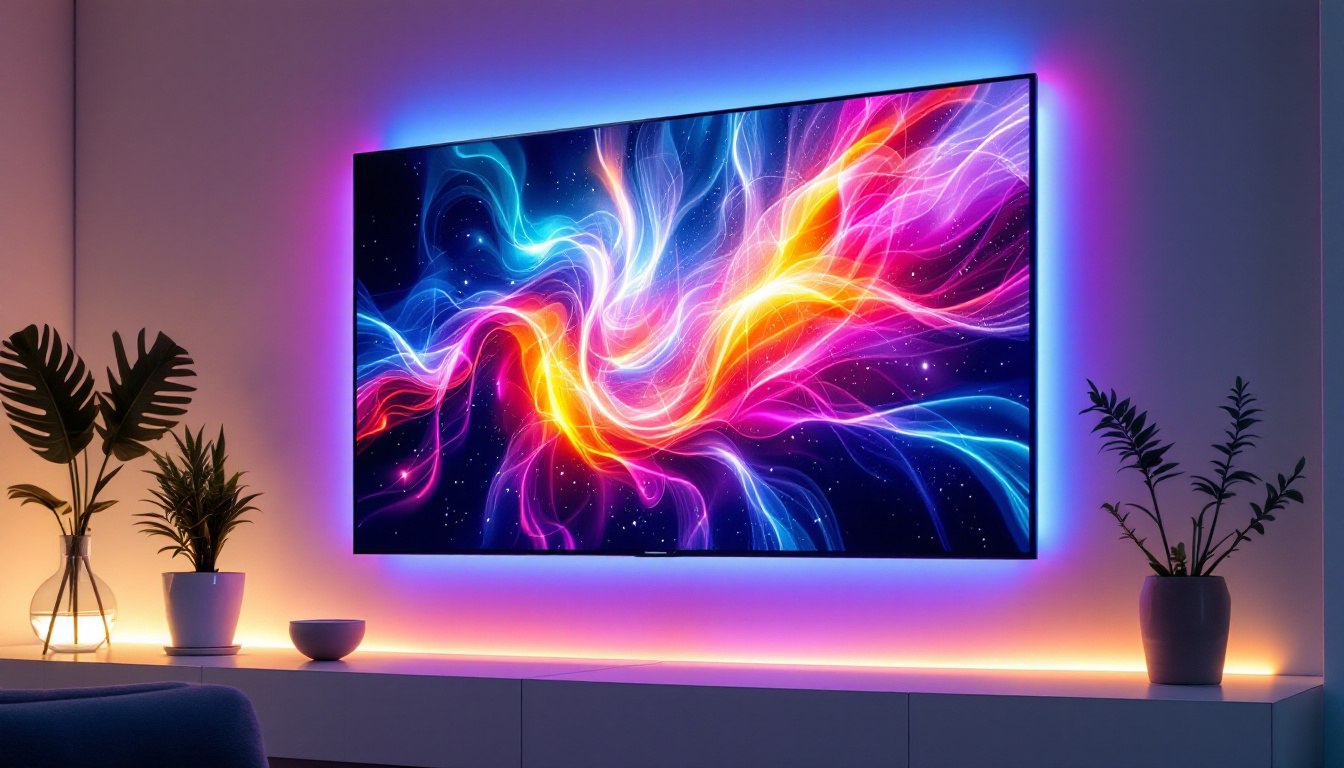In the modern world, LED displays have become ubiquitous, transforming the way information is conveyed across various platforms. From billboards to televisions, the versatility and efficiency of LED technology are evident. This article delves into the intricacies of LED displays, exploring their functionality, advantages, applications, and future trends.
What is an LED Display?
LED stands for Light Emitting Diode. An LED display utilizes these diodes to emit light and create images or text. Unlike traditional displays that rely on fluorescent or incandescent bulbs, LED displays are more energy-efficient and offer superior brightness and color accuracy. This efficiency not only reduces electricity costs but also contributes to a lower carbon footprint, making LED technology a more sustainable choice for consumers and businesses alike.
LED displays can be categorized into two main types: direct-view and backlit. Direct-view LED displays consist of an array of LEDs that form the entire screen, while backlit LED displays use LEDs to illuminate an LCD panel. Each type has its unique advantages, making them suitable for different applications. For example, direct-view displays are often preferred for large outdoor billboards due to their vibrant colors and visibility from a distance, while backlit displays are commonly found in televisions and computer monitors, offering excellent color reproduction and contrast.
How LED Displays Work
At the core of an LED display is the semiconductor material that emits light when an electric current passes through it. The color of the light emitted depends on the materials used in the diode. For instance, red, green, and blue LEDs can be combined to create a full spectrum of colors through a process known as additive color mixing. This fundamental principle allows for the creation of rich, lifelike images that can captivate audiences in various settings, from art installations to sports arenas.
In a typical RGB LED display, pixels are made up of clusters of red, green, and blue diodes. By adjusting the intensity of each color, a wide range of colors can be produced, allowing for high-quality images and videos. This technology is what makes LED displays particularly appealing for dynamic content such as advertisements and video presentations. Furthermore, advancements in LED technology have led to the development of features like high refresh rates and low latency, which are crucial for applications requiring real-time display updates, such as gaming and live broadcasting.
Types of LED Displays
LED displays come in various forms, each tailored to specific uses. The most common types include:
- Indoor LED Displays: These are designed for use in controlled environments such as shopping malls, conference rooms, and theaters. They typically have a higher pixel density, providing sharper images at closer viewing distances. The versatility of indoor displays allows for creative configurations, such as curved screens or video walls that can transform any space into an immersive experience.
- Outdoor LED Displays: Built to withstand the elements, these displays are often used for advertising in public spaces. They are brighter and more robust, ensuring visibility even in direct sunlight. Many outdoor displays also incorporate weather-resistant features, such as protective coatings and cooling systems, to maintain performance in varying temperatures and conditions.
- Transparent LED Displays: These innovative displays allow light to pass through, making them ideal for applications where visibility is crucial, such as retail windows. By blending digital content with the physical environment, transparent LED displays create a unique shopping experience that attracts customers while preserving the aesthetic appeal of the storefront.
Advantages of LED Displays
The rise of LED technology is attributed to its numerous advantages over traditional display technologies. Understanding these benefits can help businesses and consumers make informed decisions when selecting display solutions.
Energy Efficiency
One of the most significant advantages of LED displays is their energy efficiency. Compared to traditional incandescent or fluorescent lighting, LEDs consume significantly less power. This not only reduces energy costs but also minimizes the environmental impact, making LED displays a more sustainable choice. Furthermore, the lower energy consumption translates into reduced heat generation, which can enhance the overall performance and longevity of the display systems, as less cooling is required to maintain optimal operating conditions.
Longevity and Durability
LED displays have a longer lifespan than traditional displays, often lasting up to 100,000 hours or more. This durability is particularly advantageous for outdoor applications, where exposure to harsh weather conditions can damage other types of displays. The robust nature of LEDs means they can withstand shocks, vibrations, and temperature fluctuations, ensuring consistent performance over time. Additionally, the reduced need for frequent replacements not only lowers maintenance costs but also minimizes waste, contributing to a more eco-friendly approach in display technology.
High Brightness and Contrast
LED displays are known for their exceptional brightness and contrast ratios. This quality makes them ideal for outdoor advertising, where visibility is paramount. The vibrant colors and sharp images produced by LED technology can capture attention more effectively than other display types, making them a preferred choice for marketers. In addition, the ability of LED displays to maintain clarity and color accuracy in various lighting conditions ensures that advertisements remain impactful, whether viewed in direct sunlight or low-light environments. This versatility allows businesses to maximize their advertising potential and reach a wider audience.
Versatility in Applications
Another noteworthy advantage of LED displays is their versatility in applications. They can be utilized in a variety of settings, from large-scale billboards and stadium screens to smaller indoor displays in retail environments. This adaptability allows businesses to tailor their display solutions to meet specific needs, whether for promotional events, information dissemination, or entertainment purposes. Moreover, the modular nature of many LED systems enables easy scaling and customization, allowing for unique configurations that can fit any space or design aesthetic.
Low Maintenance Requirements
LED displays also boast low maintenance requirements, which is a significant advantage for businesses looking to minimize operational disruptions. Unlike traditional displays that may require frequent bulb replacements or extensive servicing, LED technology is designed for reliability and ease of upkeep. This means that once installed, LED displays can operate for extended periods with minimal intervention, allowing staff to focus on other critical tasks. Additionally, many LED systems come equipped with monitoring capabilities that can alert operators to potential issues before they become significant problems, further enhancing their reliability and efficiency.
Applications of LED Displays
The versatility of LED displays has led to their adoption across various industries. From entertainment to transportation, the applications are vast and varied.
Advertising and Marketing
LED displays have revolutionized the advertising landscape. Billboards and digital signage equipped with LED technology can display dynamic content, allowing advertisers to change messages quickly and efficiently. This flexibility enables businesses to target specific audiences and adapt to changing market conditions. Moreover, the vibrant colors and high brightness of LED displays capture the attention of passersby, making them an effective tool for brand promotion. With the ability to showcase video content, animations, and interactive elements, LED advertising becomes not just informative but also engaging, increasing the likelihood of consumer interaction and brand recall.
Entertainment and Events
In the entertainment industry, LED displays are used extensively for concerts, festivals, and sporting events. Large LED screens provide audiences with an immersive experience, showcasing high-definition visuals that enhance the overall atmosphere. Additionally, LED technology allows for creative staging and lighting effects that captivate viewers. The adaptability of LED displays means they can be configured in various shapes and sizes, creating unique visual experiences tailored to specific venues. Furthermore, advancements in LED technology have led to the development of flexible and transparent displays, which can be used in innovative ways, such as integrating into stage designs or even as part of the architecture of event spaces, blurring the lines between performance and environment.
Transportation and Public Information
LED displays play a crucial role in transportation systems, providing real-time information to commuters. From bus stops to train stations, these displays inform passengers about arrival times, delays, and other essential updates. The clarity and visibility of LED displays ensure that information is easily accessible, improving the overall efficiency of public transport systems. Beyond just schedules, LED displays can also be utilized for safety announcements, emergency alerts, and even advertisements tailored to waiting passengers. This multifunctionality not only enhances the commuter experience but also serves to optimize the flow of information in busy transit hubs, ensuring that travelers are well-informed and can make timely decisions regarding their journeys. Additionally, as cities move towards smarter infrastructure, the integration of LED displays with mobile applications and IoT technology is paving the way for even more personalized and interactive transit experiences.
Future Trends in LED Display Technology
As technology continues to evolve, the future of LED displays looks promising. Innovations in design, functionality, and sustainability are expected to shape the next generation of displays.
Advancements in Resolution and Pixel Density
With the demand for high-definition content on the rise, advancements in resolution and pixel density are becoming increasingly important. Manufacturers are developing displays with smaller pixel pitches, allowing for closer viewing distances without sacrificing image quality. This trend is particularly relevant for indoor applications where space is limited.
Integration with Smart Technology
The integration of LED displays with smart technology is another exciting trend. As the Internet of Things (IoT) continues to grow, LED displays are being equipped with sensors and connectivity features that enable real-time data exchange. This capability allows for more interactive and engaging content, enhancing the viewer experience.
Focus on Sustainability
As environmental concerns become more prominent, the LED industry is focusing on sustainability. Manufacturers are exploring eco-friendly materials and production methods to reduce waste and energy consumption. Additionally, recycling programs for old LED displays are being implemented to minimize environmental impact.
Conclusion
LED displays have undoubtedly transformed the way information is presented and consumed. Their energy efficiency, durability, and versatility make them an ideal choice for a wide range of applications. As technology continues to advance, the future of LED displays promises even more innovations that will further enhance their capabilities.
Whether in advertising, entertainment, or public information, LED displays are set to play a pivotal role in shaping the visual landscape of the future. Embracing this technology not only benefits businesses and consumers but also contributes to a more sustainable and connected world.
Discover LumenMatrix LED Display Solutions
As the landscape of visual communication continues to evolve, LumenMatrix stands at the forefront, offering a diverse range of LED display solutions tailored to meet your unique needs. From vibrant Indoor LED Wall Displays to dynamic Outdoor LED Wall Displays, and from mobile Vehicle LED Displays to engaging LED Sports Displays, our mission is to revolutionize your visual experience. We invite you to explore our innovative LED Poster Displays, interactive Floor LED Displays, and the sleek All-in-One LED Display options, including our cutting-edge LED Transparent Displays. Elevate your brand’s visibility and captivate your audience with LumenMatrix’s state-of-the-art technology. Check out LumenMatrix LED Display Solutions and join us in shaping the future of digital signage and visual storytelling.

